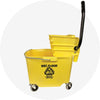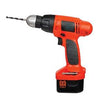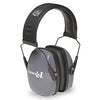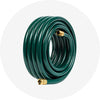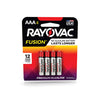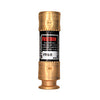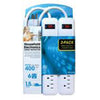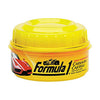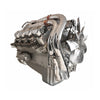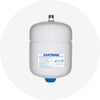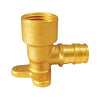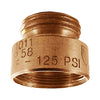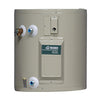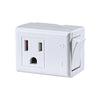Winter Pest Control Tips
∙ min read
As a homeowner, you may breathe a sigh of relief as the colder weather of winter sets in. Many of the pests that have been so visible around your home during the winter, especially flying insects such as mosquitoes, wasps, and flies, are no longer in sight. However, don't get too cozy just yet. During the winter, the need to control pests is even sometimes even greater than during the warmer months.
Why Is Winter Pest Control Important?
Many of the pests that you see around your home during the summer find shelter underground, in trees, etc., and go dormant during the winter. However, many other pests remain active all year round. These pests frequently look for warm places that provide shelter from the weather during the winter months. Human structures often provide many of the desirable qualities they look for:
-
Consistent warmth from central heating
-
Soft materials such as insulation and linens to rip up and turn into bedding
-
Privacy in unused areas
-
Protection from predators
In many cases, pests are not just looking for shelter for themselves but a safe, isolated spot in which to raise a family. Because many of these pests are prodigious breeders, this can turn into a big problem for you in a relatively short time.

What Household Pests Are You Most Likely To See During the Winter?
There are a number of bugs and critters that like to overwinter in human constructions. Among the most frequently sighted are these five pests:
1. Bed Bugs
Bed bugs feed on the blood of humans and animals, hiding out in concealed cracks and crevices during the day and coming out at night when their victims are sleeping. They do not like to work hard for their meal and will bite whatever skin happens to be exposed. The insects' saliva contains chemicals that numb the pain, so you usually do not feel the bite while it is happening. However, once this wears off you may experience an allergic reaction to the saliva that causes the bites to itch. This reaction can range from mild to severe. Once having become very rare, bed bugs have unfortunately experienced a resurgence over the past several decades.

2. Rodents
The two types of rodents most likely to make pests of themselves by seeking shelter inside your home are house mice and rats, particularly the roof rat and the Norway rat. These rodents came over on European ships during the 17th and 18th centuries and have been making a nuisance of themselves ever since. Rodent pests such as these can cause extensive property damage due to their compulsory chewing habits. They can also expose your family to dangerous diseases, whether directly through their excrement or indirectly through the parasites that they often carry.

3. Cockroaches
Cockroach behavior can be unpredictable because there are so many different species. While some prefer to live outdoors where it is cooler, others specifically seek out warm shelters indoors.

4. Flying Insects
Examples of flying insects that you may see around your home during the winter include cluster flies, fruit flies, and winged carpenter ants. It can be disconcerting to see insects flying around your home during the winter when most have gone dormant. It can be even more disturbing when you realize that there is probably a colony with many more insects somewhere in your home.
5. Spiders
The presence of insects in your home, flying or otherwise, can draw spiders inside as well. Spiders are mostly harmless, and their habit of feeding on insect pests can be beneficial to you. However, they can definitely make a nuisance of themselves by spinning elaborate webs all over the place. Not only that, but the bites of some spiders are toxic to humans. Though rarely fatal, these can cause serious side effects.

How Do Pests Get Inside Your House?
In some cases, you may bring them inside unwittingly. For example, when you buy fresh fruit and bring it home, you may bring in fruit flies at the same time. Bed bugs are increasingly common in hotels and motels, and sometimes they crawl in your luggage without you noticing and hitch a ride.
Other pests are more likely to get into your home through small openings around doors and windows, as well as utility pipes and cables. Cracks in the foundation or holes in the roof can also provide access.

What Can You Do To Control Pests During the Winter?
Winter pest control methods depend on the type of creature infesting your home. For example, insecticide is likely to be effective against cockroaches and flying insects and perhaps spiders as well, but it probably won't help you get rid of mice or rats.
The best method is often to prevent pests from getting inside your home in the first place, or dissuading them from staying long if they do get in. Here are ways you can be proactive in controlling pests:
-
Fix leaks and control extra moisture in areas such as crawl spaces, bathrooms, and kitchens.
-
Screen chimney vents.
-
Repair damaged window screens and weather stripping.
-
Declutter storage areas and keep them well organized.
-
Look for holes or cracks in your home's exterior and seal any that you find.
Rodents in particular can fit through holes that appear much smaller than their bodies, and if a mouse can fit through, it stands to reason that insects can get in too. Therefore, you should not ignore any cracks or holes that you find.
Pest control is your responsibility as a homeowner, but that doesn't mean you have to do it alone. At Max Warehouse, we offer traps, baits, and repellents, as well as mitigation products to help you cope effectively with an infestation.
Shop our Pest Control Collection.








